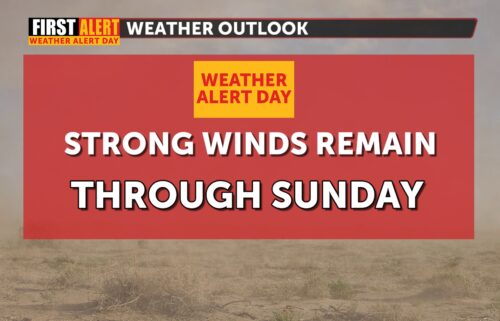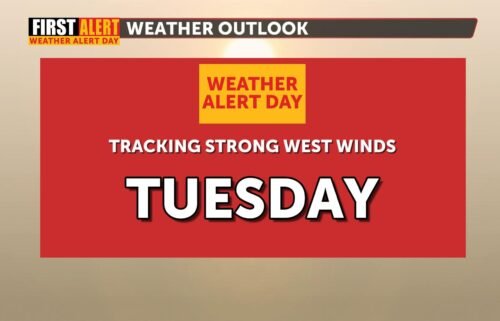University program is bringing homes to the Navajo Nation
By Logan Stefanich
Click here for updates on this story
BLUFF, San Juan County, Utah (KSL) — Atsushi Yamamoto and his wife, Hiroko Yamamoto, like to take a hands-on approach as architects. They also believe in sharing their experience with future generations.
These convictions landed them instructor roles with DesignBuildUTAH, a program at the University of Utah College of Architecture and Planning that allows graduate students to immerse themselves in hands-on opportunities to design and build full-scale works of architecture in collaboration with residents of the Native American communities of San Juan County.
“We focus on eco-friendly and affordable homes in a location with many challenges,” said Atsushi Yamamoto, the program’s instructor.
Last December, six students from the College of Architecture and Planning completed the Horseshoe Project, an 864-square-foot expandable home with a greenhouse, a wood-burning stove, an outdoor fire pit, and a water catchment to collect rainwater.
“The Horseshoe Project was really designed with a sense of the client in mind, trying to respond to some of those specific desires, not only of the client but of the Navajo culture in regard to that,” said Keith Moore, dean of the College of Architecture and Planning at the U.
To ensure that the project was designed with the client in mind, students and the home recipients attended online classes together throughout the design stage to develop and refine the building plan before construction began in September.
Sweat equity One of the major aspects of the program, Hiroko Yamamoto said, is based on a concept called sweat equity.
“(The clients) learn about how we design, how we build, what the materials (are), how to use tools,” she said. “Everything we learn together with students and the client. This educational opportunity is not only for students; this is an educational opportunity for the Diné community, too.”
This concept allows home recipients to assist in the build, opening the door for them to potentially expand or alter their homes in the future.
“We designed Horseshoe house with a few ideas in mind, like the lifestyle of the collaborative residents (recipients) and building materials available,” Isabella Ghabash, a graduate student involved in the project, said. “One of the recipients is an incredibly talented (and) experienced mason, so we were fortunate to have his craftsmanship on their home.”
“We aim to provide learning opportunities, not only for our architecture students but also the home recipients,” Atsushi Yamamoto said. “The students completed the core parts of the construction; and since we worked with recipients together, they are confident that they will finish the rest of the work of their new home.”
In addition to the sweat equity model, the Yamamotos also said that they incorporated local materials such as sand, clay and soil into the building design.
Challenges Atsushi Yamamoto said that the biggest challenge of the project, in his eyes, was having to design the house as an off-grid, on-grid hybrid, along with the difficulties that came with the location of the construction site.
“When you’re dealing with a site that’s so remote, you have to be incredibly efficient in your logistics of: How are you going to get the materials out there? When are they going to arrive on-site?” Moore said. “It just kind of exacerbates all the complexities that would happen in a project that’s happening in a suburban environment, but here now, you’re essentially in a frontier environment.”
Due to the remote location, home recipients are sometimes faced with a significant waiting period before water and electricity lines can be connected to their homes. Still, Atsushi Yamamoto said that the goal of DesignBuildUTAH is to have the recipients move into their new homes immediately after construction — a goal that requires some innovative solutions.
“The house has to have a concept. One is off-grid. But after the electricity and the water is connected, (it’s) on-grid. So students have to design both,” he said. “For the Horseshoe project, students built a box that allows off-grid electricity to power the home. Navajo Nation hooks up infrastructure after a home has been built, so this box allows the new homeowners to install solar panels and batteries or run a generator to heat and light their home.”
In total, the Horseshoe Project took 12 weeks of on-site work and more than 5,000 person-hours. The Navajo Revitalization Fund provided most of the materials’ funds and the rest of the materials were donated by Big-D Construction, Mountain Fiber Insulation and JRC Lighting.
Looking forward Since 2004, 16 houses and several projects — including community kitchens, classrooms, cabins and landscape art — have been constructed in the Four Corners area by students.
“Now that we have this track record, we have a certain sense of what they’re looking for in their designs,” Moore said.
DesignBuildUTAH works in partnership with the rural and native communities of San Juan County in the Four Corners area. Annually, recipients are chosen based on the recommendations of the Utah Navajo Trust funding, Navajo Revitalization Fund and local chapter houses.
The Yamamotos are currently meeting potential donors for the 2022 project. Companies interested can donate wood, windows, plumbing, electric materials or tools. Folks interested in supporting the program can contact Angie Harris Roberts at angie.roberts@utah.edu. Those wanting to contribute materials or volunteer time can contact Hiroko Yamamoto at hiroko@arch.utah.edu.
Please note: This content carries a strict local market embargo. If you share the same market as the contributor of this article, you may not use it on any platform.



